Before implementing any initiatives to improve inclusion, it is essential to first assess your company’s progress on workplace diversity, equity, and inclusion (DEI). Failing to do so can lead to assumptions and the oversight of key opportunities for improvement. Without analyzing the data, how can you determine where to focus your efforts, which teams lack diverse representation, or where unconscious bias persists?
We know that diverse workforces far outperform those companies that don’t prioritize workplace DEI. A 2023 McKinsey report found that businesses in the top quartile for gender diversity on their board of directors are 27% more likely to financially outperform those in the bottom quartile. Similarly, those in the top quartile for ethnically diverse boards are 13% more likely to outperform the bottom quartile of businesses.
That’s why we asked Luiza Barwood, a seasoned Talent Consultant, DEI Adviser and Career Coach, to share her advice in a recent episode of Tiger Recruitment’s podcast From the Tiger’s Mouth. Luiza discussed how businesses can collect and analyze DEI data to drive maximum impact, even with limited resources.
Understanding DEI: The Basics
Before even starting to measure DEI, it’s essential to first understand what the terms diversity, equity and inclusion entail, particularly in the context of a workplace:
- Diversity refers to the mix of people within an organization. This includes both visible and invisible characteristics such as gender, race, disability, age, neurodiversity, and socioeconomic background.
- Equity ensures fair treatment, access, and opportunity for all employees. While equality gives everyone the same resources, equity recognizes systemic barriers and provides tailored support to level the playing field.
- Inclusion focuses on creating a culture where every employee feels valued, respected, and empowered to contribute fully.
Why Measuring DEI Matters
Measuring DEI is essential for accountability and continuous improvement. Without concrete data, businesses risk engaging in performative programs rather than implementing meaningful change. Measuring workplace inclusion helps to answer critical questions such as:
- Who are we hiring, and is there diversity across all levels of the company?
- Who is being promoted, and are growth opportunities accessible to all employees?
- Who is leaving after a short time? If there is a trend of certain demographics of employees leaving, what is driving them away?
It is crucial to address a broad range of metrics when measuring DEI. For example, an organization might have a fantastic program to attract diverse talent but struggle to retain this diverse workforce once employees are through the door. Analyzing a variety of metrics will mean that DEI efforts can be focused on the areas that are most needed rather than wasting resources on already high-performing areas.
Key Metrics for Measuring DEI
To track DEI progress, businesses must analyze both quantitative (numerical) and qualitative (descriptive, non-numerical) data:
Workforce Demographics
Gathering quantitative demographic data across different levels of the business is the first step. Companies should track diversity in recruitment, promotions, and leadership positions, utilizing resources such as DEI monitoring forms, filled out by job applicants. However, it is crucial to handle this demographic data with sensitivity and to explicitly communicate to employees how their data is being used.
Pay Equity Analysis
Analyzing salary data by gender, race, disability, and other protected characteristics can reveal pay gaps and compensation inequities. Collecting this quantitative data will highlight areas for improvement.
Employee Feedback and Inclusion Surveys
Numbers alone can’t provide the full picture of DEI progress. Conducting anonymous surveys to gauge employee experiences can uncover deeper insights into a company’s working environment. Key questions might include:
- Do you feel your voice is heard in meetings?
- Do you believe promotions are fairly distributed?
- Do you trust leadership to support DEI initiatives?
Retention Rates
Tracking who stays and who leaves can help to identify disparities. Are certain groups of employees leaving at higher rates? If so, what barriers might be driving them away? While some of this retention data can be monitored using quantitative methods, pulse surveys and exit interviews will help HR teams to better understand any barriers preventing employees from remaining and progressing within the business.
Challenges in Measuring DEI
There are some common pitfalls when it comes to DEI measurement. Challenges can include:
Data Gaps
Employees may be hesitant to disclose demographic information due to privacy concerns. It is important to communicate exactly how data will be used and your company’s data privacy policies in order to reassure employees of how their data is analyzed.
Lack of Actionable Insights
Gathering data is only useful if it leads to meaningful changes. Businesses should go beyond surface-level statistics to identify root causes of disparities and act swiftly to implement targeted solutions, such as policy changes or leadership training.
One-Size-Fits-All Approaches
DEI strategies should be tailored to a company’s specific needs. This is why measuring data is so impactful, as it enables you to implement strategies that will make a real difference.
The Role of AI in Measuring DEI
AI can transform the way we track and analyze DEI effort, and in particular, can support small businesses who have limited resources.
Inclusive Recruitment Processes
Starting from the very beginning of the recruitment cycle, Luiza suggests using AI to help create unbiased job descriptions. You can ask your chosen AI tool to help you identify and remove biased language that may deter certain demographics from applying. Once at the interview stage, AI platforms can help hiring managers remove bias from interview questions and select a diverse hiring panel.
AI in Data Analysis
AI tools can significantly cut down on resources required to analyze DEI data, when employees know how to use them effectively. Once the data has been gathered and anonymized, this can be plugged into an AI platform to analyze the breakdown of demographics that your company currently is attracting, helping you to see any disparities.
AI can also help examine promotion data, identify gaps and suggesting ways to enhance data collection processes.
Innovative Improvement Strategies
Once past the analyzing stage, AI can support you in discovering methods to improve your current efforts. Luiza suggests asking your chosen platform to create a schedule of employee resource groups and requesting prompts to initiate constructive group discussions.
Furthermore, AI can be useful if you’re looking to create a business case for senior leadership once a disparity has become apparent. For example, if you’re struggling to attract female engineers, an AI tool can suggest some targeted initiatives and evidence their efficacy within other organizations.
Yet, it is important to remember that AI needs to be used responsibly. Depending on the system in use, some AI platforms exhibit algorithm bias, often stemming from biased training data. Therefore, it is essential to have human oversight on any AI initiative to check for and address potential biases.
Turning Data into Action
While collecting data is a key step to improving a business’ DEI practices, it is just the beginning. Companies must follow through on their findings to initiate real progress. To turn DEI data into action, businesses should:
Communicate Findings Transparently
Employees should understand why their data is being collected and how it will be used. To further improve communication, companies can regularly feedback to employees on how their data has been used to implement inclusive initiatives. This may encourage employees to share their experiences more readily, making future DEI measurements even more representative of the full business.
Set Clear Goals
It is important to establish measurable objectives once you have noticed a disparity in opportunities. Examples may include increasing diverse representation in leadership roles by a certain percentage, or improving trust in leadership to support DEI by providing annual inclusion training.
Implement Targeted Improvements
Identified gaps can be addressed through mentorship programs, inclusive hiring practices, and equitable career development opportunities. For further support on how to make your hiring practices more inclusive, please see our DEI Recruitment Guidelines.
Monitor and Adapt
DEI metrics should be regularly reviewed to ensure that improvement strategies remain relevant. Goals and strategies may need adjusting based on your findings to ensure they are still having the desired impact.
Measuring DEI is a continuous journey rather than a one-time task. Businesses that authentically commit to tracking, analyzing, and acting on DEI data will create a fairer workplace, and ultimately build a stronger, more successful business in the long run. By developing an inclusive environment where all employees feel supported to perform at their best, businesses position themselves as ethical, responsible employers, enabling them to attract and retain exceptional talent.



